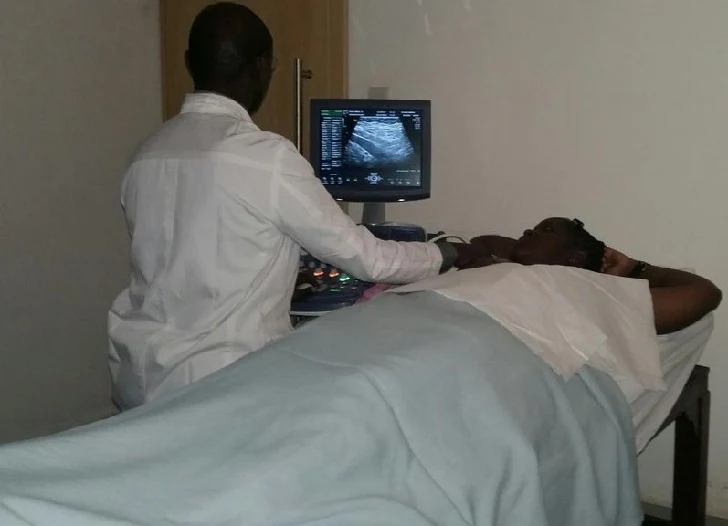This is a post not only to raise awareness about breast cancer but also to remind women to take steps for prevention, screening, and early detection of the disease. Other gynecological cancers should also not be forgotten. This should serve as a prompt for screening for other cancers as well.
Also, read: Everything women need to know about cancer
Beyond breast cancer, other gynecological cancers include cervical, uterine, ovarian, and vulvar cancers. Just like breast cancer, there is an established routine screening program for cervical cancer. The other group of cancers falls into a category where routine screening is not yet established, but some women may have certain risk factors warranting an individualized approach to some form of screening.
Beyond breast cancer, other gynecological cancers include cervical, uterine, ovarian, and vulvar cancers. Just like breast cancer, there is an established routine screening program for cervical cancer. The other group of cancers falls into a category where routine screening is not yet established, but some women may have certain risk factors warranting an individualized approach to some form of screening.
Also, read: Why only a few people survive from cancer
For breast cancer, the first step is to be familiar with your own breasts. You need to be aware of any changes in the skin and the deeper tissues of the breasts. Any unusual lumps must be checked out. Your doctor or nurse can easily show you how to routinely check your breasts every month. Anything unusual must be cross-checked by your doctor, and inform on the need for further testing. Most authorities recommend screening with mammograms from the age of 40, and every 1 to 2 years subsequently. Special risk factors may justify starting screening earlier, and more frequently. This should be discussed with your doctor. See Breast cancer self-exam guide here
For breast cancer, the first step is to be familiar with your own breasts. You need to be aware of any changes in the skin and the deeper tissues of the breasts. Any unusual lumps must be checked out. Your doctor or nurse can easily show you how to routinely check your breasts every month. Anything unusual must be cross-checked by your doctor, and inform on the need for further testing. Most authorities recommend screening with mammograms from the age of 40, and every 1 to 2 years subsequently. Special risk factors may justify starting screening earlier, and more frequently. This should be discussed with your doctor. See Breast cancer self-exam guide here
Also. read: Fight cancer with knife and fork
Cervical cancer screening should be commenced at around the age of 21. Common screening tests include Pap smears every 3 years, or what is called visual inspection of the cervix. Co-testing with human papillomavirus (HPV) can be done, allowing lengthening of the screening interval for some. Cervical cancer prevention vaccines are now available, and vaccination is recommended for all preteen girls (and boys) before ever getting exposed to HPV.
Cervical cancer screening should be commenced at around the age of 21. Common screening tests include Pap smears every 3 years, or what is called visual inspection of the cervix. Co-testing with human papillomavirus (HPV) can be done, allowing lengthening of the screening interval for some. Cervical cancer prevention vaccines are now available, and vaccination is recommended for all preteen girls (and boys) before ever getting exposed to HPV.
Also, read: How diet influence the development of cancer
Many women ask about screening for ovarian cancer. There is, however, no routine ovarian cancer screening tests presently, even though this may change as scientific data accrues. Vague pelvic symptoms always trigger ovarian imaging though. Some women may have higher ovarian cancer risks related to genetic inheritance and may qualify for some individualized screening approaches. The same goes for uterine cancer. The vulva is luckily situated externally, and any potentially cancerous changes will be evident pretty early.
Many women ask about screening for ovarian cancer. There is, however, no routine ovarian cancer screening tests presently, even though this may change as scientific data accrues. Vague pelvic symptoms always trigger ovarian imaging though. Some women may have higher ovarian cancer risks related to genetic inheritance and may qualify for some individualized screening approaches. The same goes for uterine cancer. The vulva is luckily situated externally, and any potentially cancerous changes will be evident pretty early.
Also, read: In my Family, we have no history of breast cancer, can I still have it?
Maintaining a healthy lifestyle will reduce the overall risks of gynecological cancer. Keep your weight in check, eat healthier, avoid toxins like alcohol and tobacco, and maintain some physical activities. Get any unusual symptoms checked out promptly. Adhere to the recommended cancer screening intervals. Any disease picked up early has good chances of being cured, or contained. And don’t just get screened all by yourself, encourage your family members and friends to get screened as well.
Maintaining a healthy lifestyle will reduce the overall risks of gynecological cancer. Keep your weight in check, eat healthier, avoid toxins like alcohol and tobacco, and maintain some physical activities. Get any unusual symptoms checked out promptly. Adhere to the recommended cancer screening intervals. Any disease picked up early has good chances of being cured, or contained. And don’t just get screened all by yourself, encourage your family members and friends to get screened as well.
